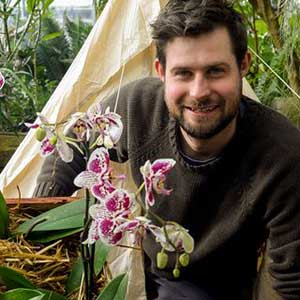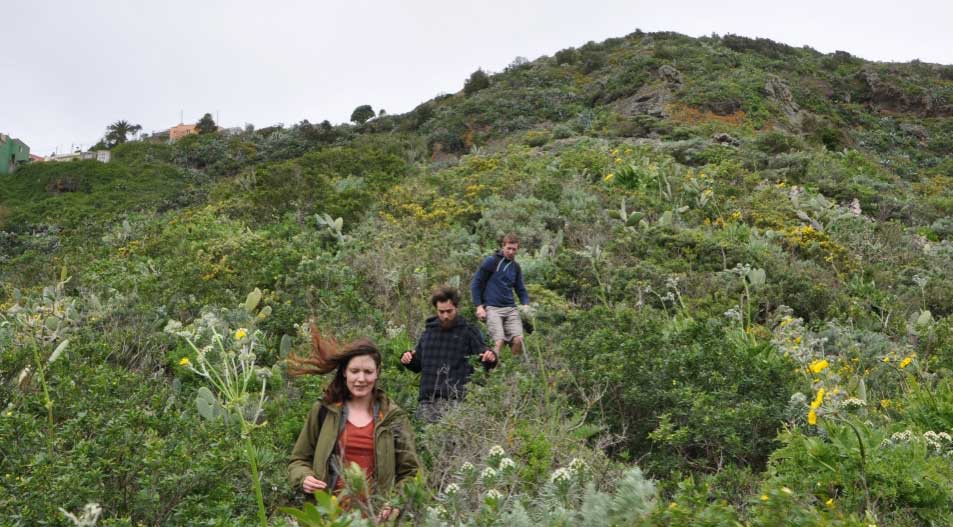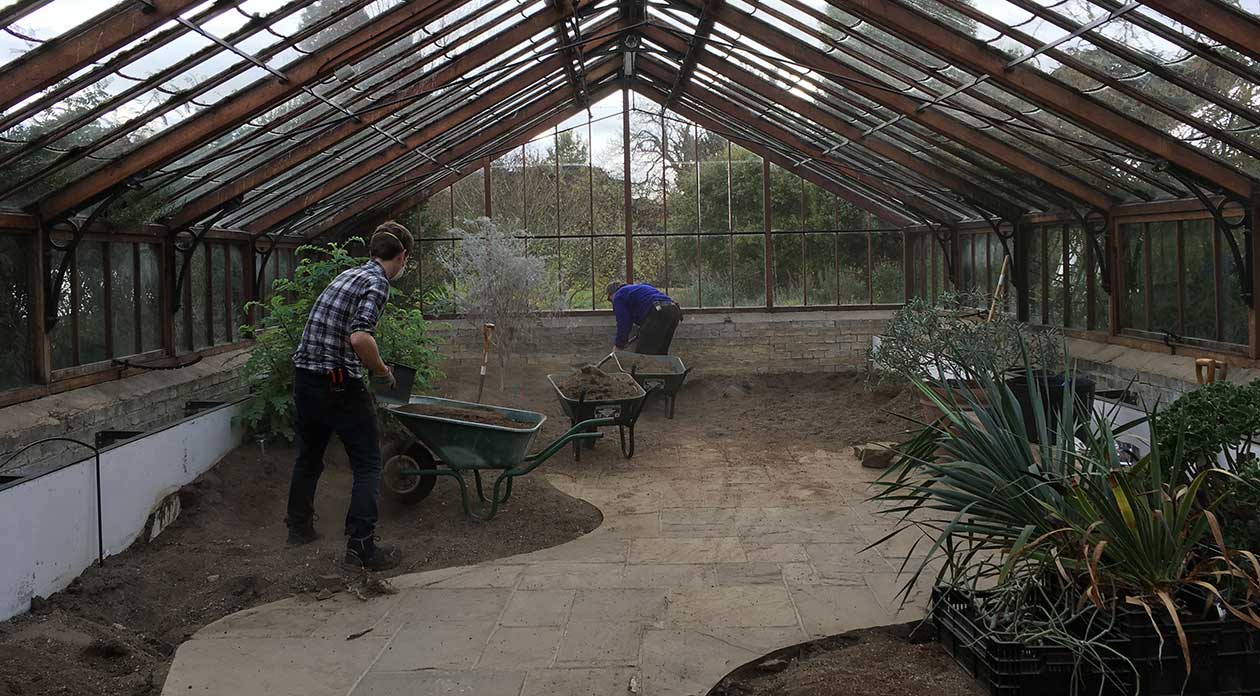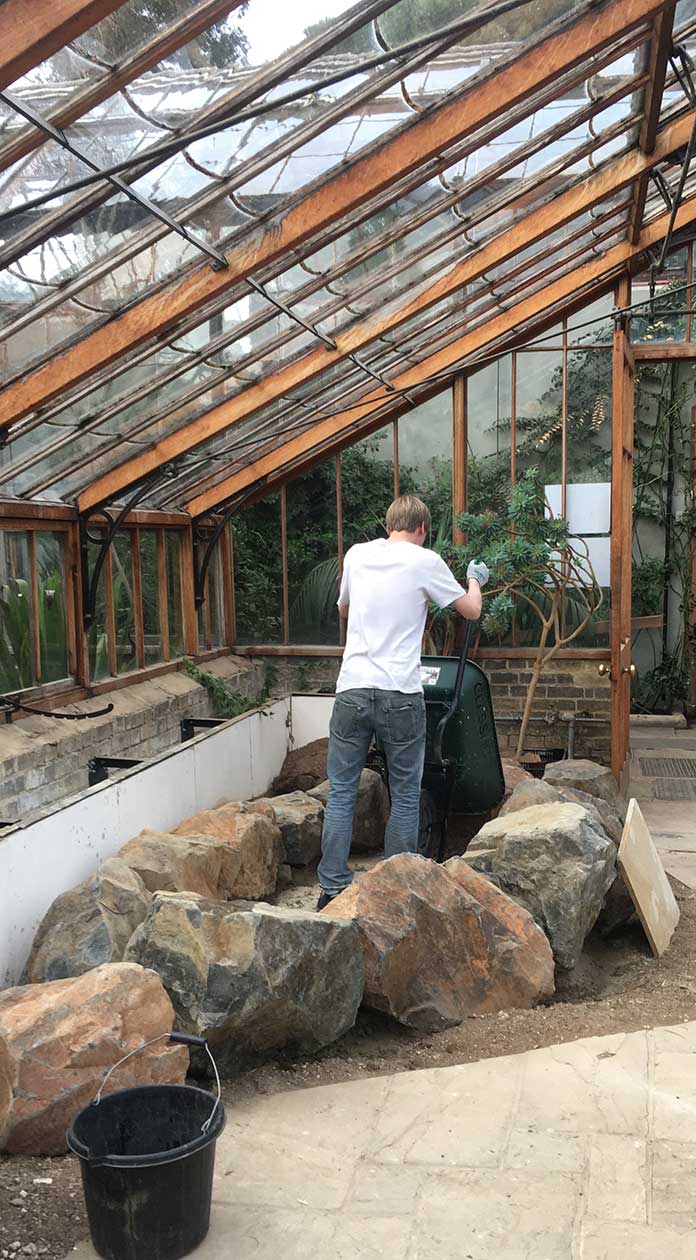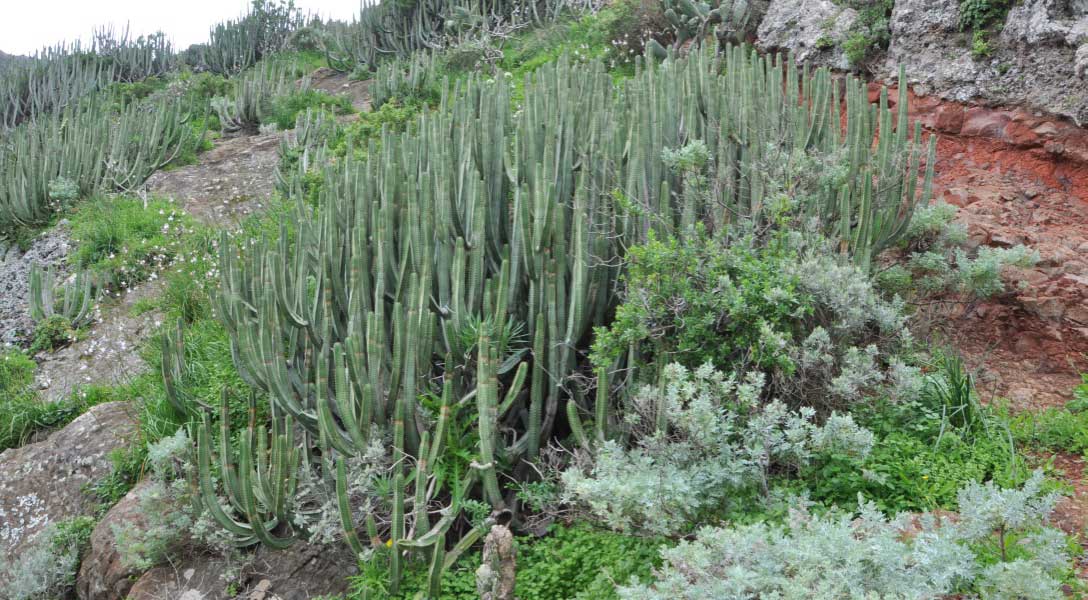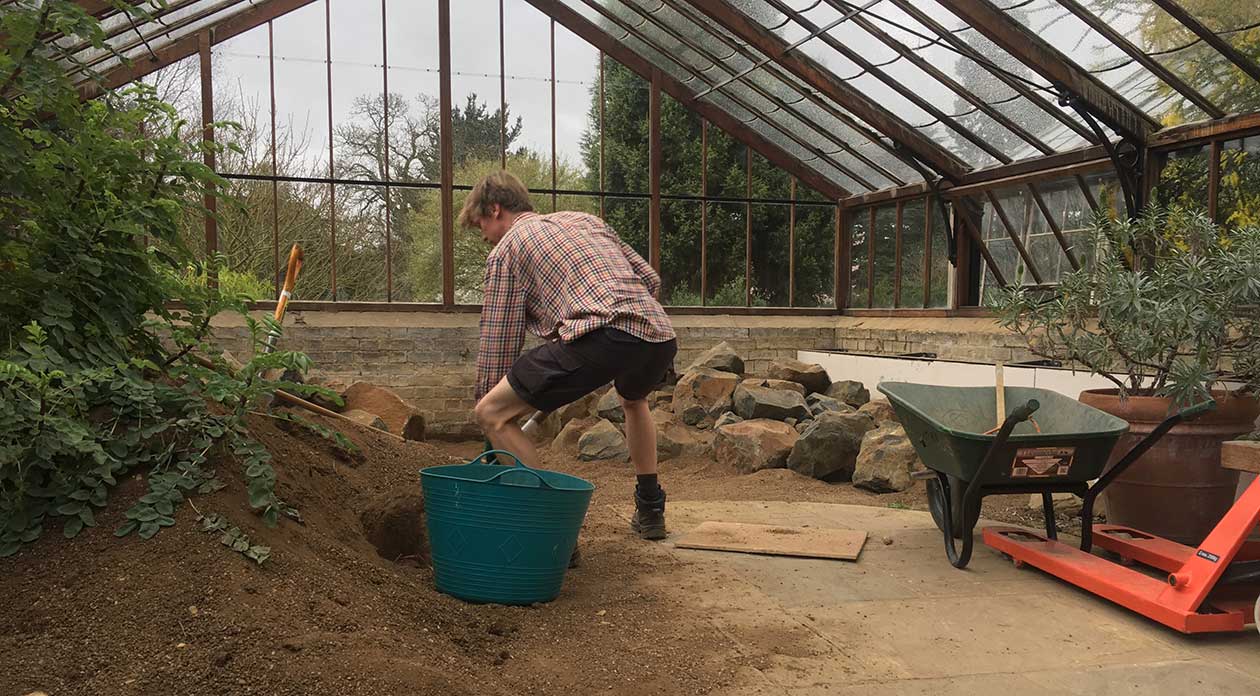Following a complete review and refit, the Ocean Islands House in the Botanic Garden Glasshouse has now reopened focussing on the islands of Macaronesia.
Redevelopment of the Oceanic Islands House
Many of our visitors will have noticed that the Oceanic Islands House at the Botanic Garden was closed and emptied in early December, 2016. Its contents were propagated or decanted to the reserve houses and all the sandstone boulders and much of the soil removed to bags and pallets in the Glasshouse Yard. This, however, was not the beginning of the project to rethink and re-landscape the Oceanic Islands House, for this I look back to my arrival at the Gardens in September 2012.
At the time I was reading The Song of the Dodo: Island Biogeography in an Age of Extinction by David Quammen, continuing a long-held personal interest in the evolution of island ecosystems. A trip to the Canary Islands grew out of this, and together with a number friends, we visited the islands of Tenerife, Gran Canaria and La Gomera. This provided an opportunity to explore and botanise their unique flora and dramatic volcanic landscapes, with the aid of a well-thumbed copy of Bramwell’s Flora of the Canary Islands.
A pre-organised meeting with the Curator of the Jardín Botánico Canario, Dr Juli Caujapé-Castells, on Gran Canaria allowed further insight into the evolution of the flora of the Macaronesian archipelagos. These constitute four island chains; Cape Verde, the Canaries, Maderia (and the Savage Islands) and the Azores, and are the result of several volcanic hotspots. During the visit I was able to pick-up wild collected seed from their seedbank, which I had selected and ordered prior to the trip. The choice of material was governed by embryonic ideas on the changes I wanted to make to the House and the reality of any planting: it takes a couple of years, at least, to seed and raise the stock.
Propagating and Focussing
On return to Cambridge all the seed was sown and much of it germinated adding a wealth of new, wild provenance, accessions to the Garden catalogue. Over the next couple of years this was pricked-out, potted on and grown into mature plants. As these matured so did my ideas on the internal landscape of the Oceanic Islands House.
The St Helena constituent of the 2007 re-landscape, was now a monoculture of St Helena ebony, Trochetiopsis ebenus, a critically endangered mallow relative rediscovered in 1980. Apart from this, we hold only two other plant species from St Helena on-site, and acquisition of further material was proving difficult. St Helena is a tropical island that lies 2000km off the southwest coast of Africa. The island’s ecosystems are heavily degraded, which is largely attributed to the introduction of an array of mammal species. With all this in mind, together with public familiarity with Macaronesian islands as popular holiday locations, it was decided to move the St Helena accessions to the corridor and focus the house on Macaronesia.
Following considerable reading and my visit to the Canaries I was keen to ensure the re-landscape provided an opportunity to introduce the concept of endemism. Endemic, in terms of a plant, animal or any other living organism, refers to its nativity, being located only within a defined region. For example, lemurs are endemic to Madagascar. The Canaries show high endemism with regards to their flora, with 470 of approximately 1700 species only found within the island chain some in just one location. It was important that the re-landscaped house highlighted some of the environments which provided a cauldron for speciation or acted as oases for relict species now extinct from arid north Africa and the Mediterranean basin.
The Design and Build
By the Spring of 2016, I was ready to begin drawing up a design for the House, this is all still done in pencil, on a drawing board with a scale rule. Once I had a finalised design, I presented this to the Head of Horticulture, together with a projected budget, with regards to the materials required. This proved difficult as sourcing an appropriate rock for the hard-landscape was key to the re-development. Oceanic islands by the nature of their creation have a mainly igneous geology. East Anglia, as most will have noticed, is not mountainous and quarries in this region are mainly centred around sand and aggregate. Therefore, to get a volcanic rock I had to look much further afield to a quarry in the Scottish borders, settling on a black basalt.
The landscape of the Macaronesian archipelagos are dominated by volcanism and the subsequent erosion of these landscapes. Cliffs and gullies dominate the younger islands and it is these that I have looked to replicate in the House. Many of the narrow endemics are found in these precarious locations. The scale of the planned rockwork required a sub-base to be laid for each component, before any ‘real’ landscaping can start.
With the House cleared by mid-December, 2016, all works ceased to allow for Orchid Festival preparation and installation. The first delivery of rock was dropped off at this stage, a 15-ton load of basalt boulders and aggregate. As many will be aware, the Glasshouse Range was not constructed with the movement of large volumes of heavy material in mind. The doors are narrow and the floors can only take a limited loading. Therefore, with 40 plus tonnes of material to move, pre-planning and a narrow pallet truck have been essential.
The cliffs began to rise in February, and each rock was hefted into place and carefully manoeuvred to provide a naturalistic finish. The internal space of the cliffs is filled with a basalt aggregate and the structures form tiers, much like a wedding cake. A black cement dye was used in the concrete mix onto which the upper rocks were bedded, to hide unsightly gaps and create pockets to hold soil. The pair of cliffs flank the path as you enter the house and if you inspect them carefully over the coming years you should see a chasmophyte flora develop in the nooks , crannies and pockets. A chasmophyte is simply the term given to a plant that grows in rock fissures.
The Plants
The north face of the cliffs and associated bed provides an opportunity to include a limited palette of laurel forest vegetation. This is characterised by subtropical evergreen forest, with high humidity found on the western slopes of the Macaronesian islands. This vegetation is a relict of a much older flora that covered the supercontinent of Gondwana. It has disappeared from nearby Africa, as the climate has become drier. This vegetation is high in endemic genera and species. The backbone of these forests are tree species of the laurel family, Lauraceae, including relatives of bay, Laurus novocanariensis and avocado, Persea indica.
The rear of the House has a more informal touch, the landscape has been designed with the lower slopes of the Macronesian Islands in mind. These are rocky and dry and the flora of these areas is characterised by a xerophytic (drought tolerant) scrub. Euphorbia’s dominate this vegetation, whether as squat, highly branched shrubs, such as Euphorbia balsamifera, or the great angular columns of Euphorbia canariensis.
We constructed two piles of basalt, placing freely, unlike the considered approach taken with the cliffs. A soil covering ties these structures together and the rockwork emerges from beneath.
The bed that lies between the cliff structures and the rocky xerophytic zone provides an opportunity to showcase some of the lowland coastal and arid flora found on these islands. These lunar landscapes have a sparse vegetation of low growing shrubs and associated oddities, such as the leafless and succulent relatives of the periwinkle, Caralluma burchardii and Ceropegia fusca. Whilst their growth habit may look bizarre, their geometric flowers are even weirder, like something out of a low budget alien film.
With work completed on the House over the next couple of years, Alan, the Glasshouse Assistant, and I will continue to tweak and nurture the planting so that they provide an analogue of the vegetation on which they are based. In turn this should provide the opportunity to introduce the fascinating floras of the Macaronesian archipelagos and evolutionary concepts associated with oceanic islands.
The Oceanic Islands House reopens on Saturday 20 May at the Botanic Garden’s Festival of Plants.

